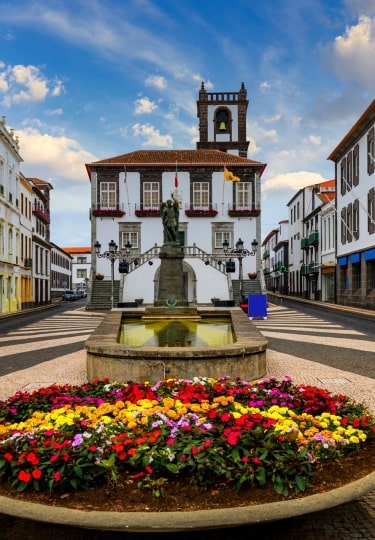Ponta Delgada is located on the island of São Miguel in the Azores, a Portuguese archipelago that rises from the deep blue of the North Atlantic Ocean.
Lesser-known and with fewer crowds than their Atlantic neighbors of the Canary Islands and Madeira, the Azores offer a more remote feel, with plenty of off-the-beaten-track experiences to discover. The nine volcanic islands of the Azores—lying almost 1,000 miles from Portugal’s mainland—share similar characteristics of glistening lakes, volcanic beaches, steaming hot springs, and cliff-hugging roads that weave through dense green forests.
Ponta Delgada, the Azores’ charming capital, has a dazzling dining scene, owing to the island’s plentiful natural bounty. Ponta Delgada is compact enough to explore during a day trip, with historic landmarks and a pretty waterfront, but it’s also the perfect base from which to seek out some of São Miguel’s more dramatic natural attractions.
Why Visit Ponta Delgada?
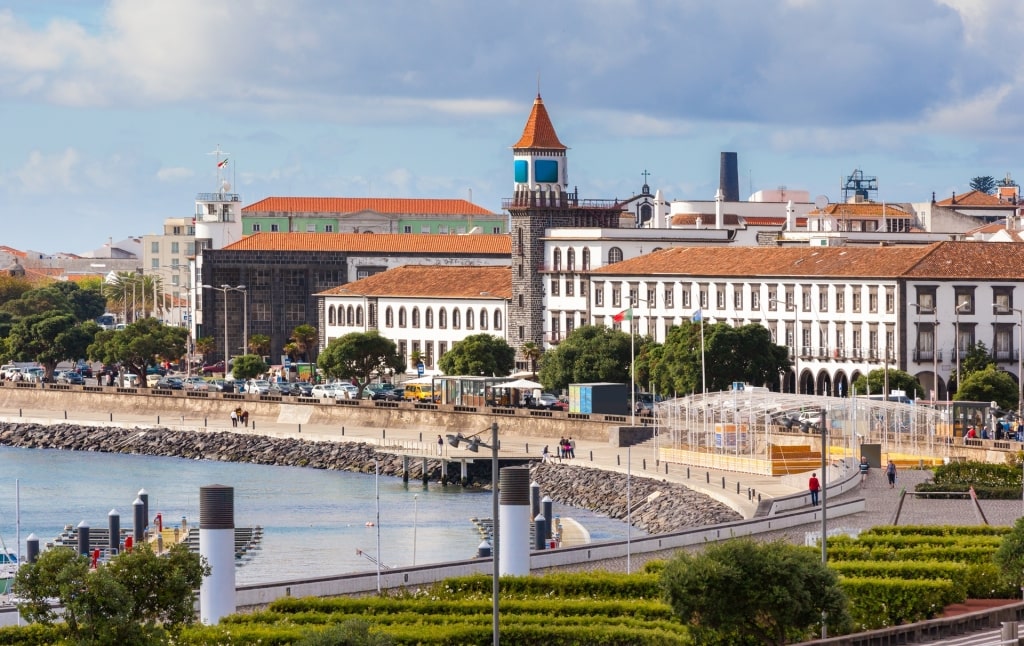
Ponta Delgada
Situated on the south coast of São Miguel, the largest island in the Azores archipelago, Ponta Delgada has much to offer for the adventure-seeking traveler.
With a walkable city center, visitors can explore the attractive cobbled streets, admire traditional balconied houses, and dip in and out of centuries-old churches in just a short visit.
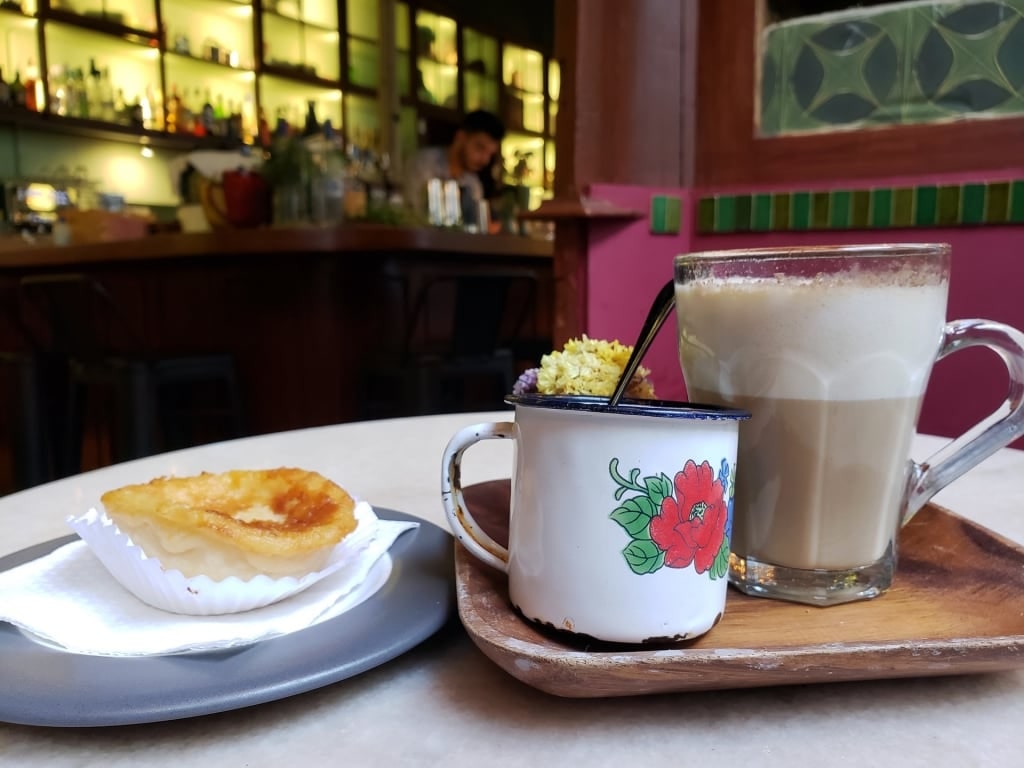
Café in Ponta Delgada
When it comes to dining, Ponta Delgada covers all bases, with the city boasting plenty of cafés, restaurants, and bars offering everything from morning coffee to wine tastings, snacks, and gourmet meals.
Ponta Delgada is also ideally located for some of the best beaches in the Azores, with an excellent transport system that allows for easy exploration of the wider island.
History & Culture
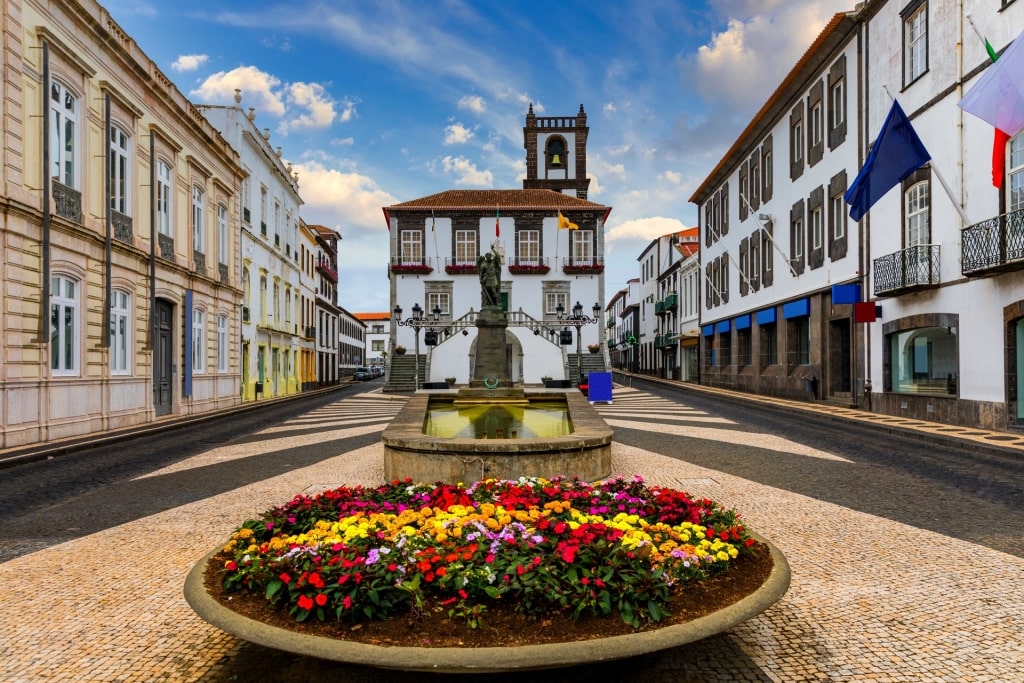
City Hall
Ponta Delgada started out as a small fishing village developed by early settlers from Portugal in the 15th century. Following a devastating earthquake in 1522, destroying São Miguel island’s original capital, Vila Franca do Campo, Ponta Delgada was promoted to capital status by King João III of Portugal in 1546.
During the 17th century, churches, monasteries, and convents began popping up around the blossoming city, and by the 1800s, Ponta Delgada’s economy was thriving thanks to its export of oranges to the UK. However, pineapple has replaced orange as the island’s favorite fruit, with the tangy, tropical produce grown on plantations all over São Miguel.
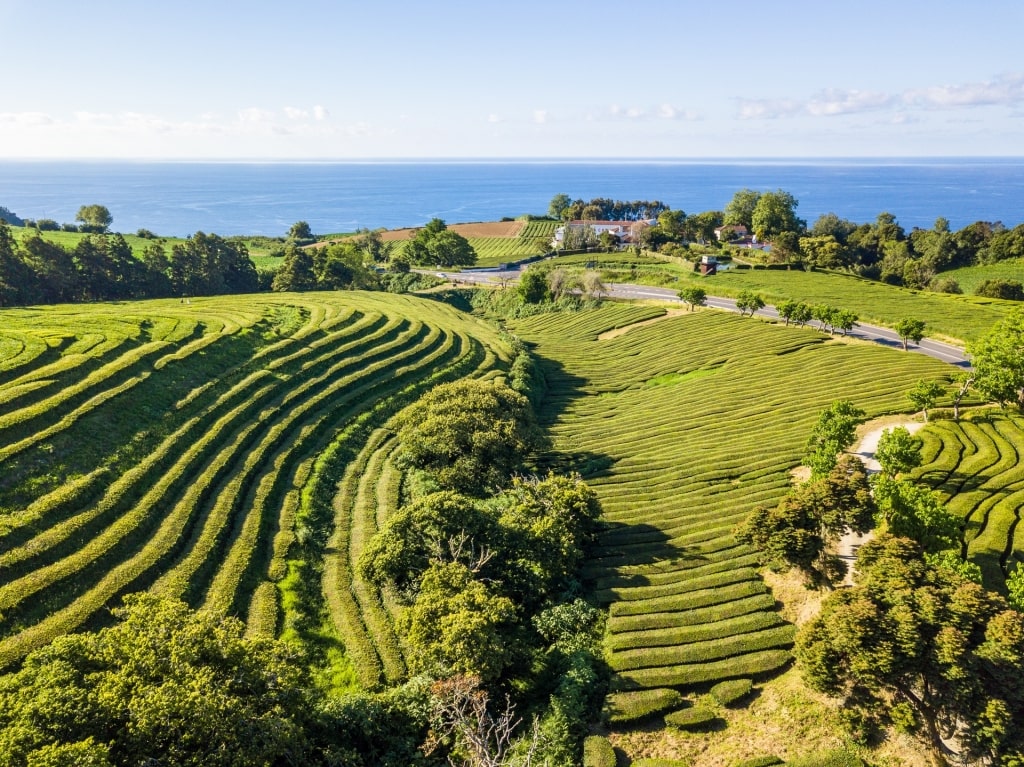
Gorreana plantation
São Miguel Island also boasts the oldest tea plantation in Europe. The Gorreana plantation has produced black and green tea in northern São Miguel since 1883. The tea leaves are cultivated from the Camellia Sinensis tree, which thrives in the Azores’ north Atlantic climate.
Several annual religious celebrations occur in Ponta Delgada, including the Feast of the Lord Holy Christ of the Miracles. On the fifth Sunday following Easter, the event sees vibrant festivities in Campo de São Francisco, opposite the Fort of São Brás.
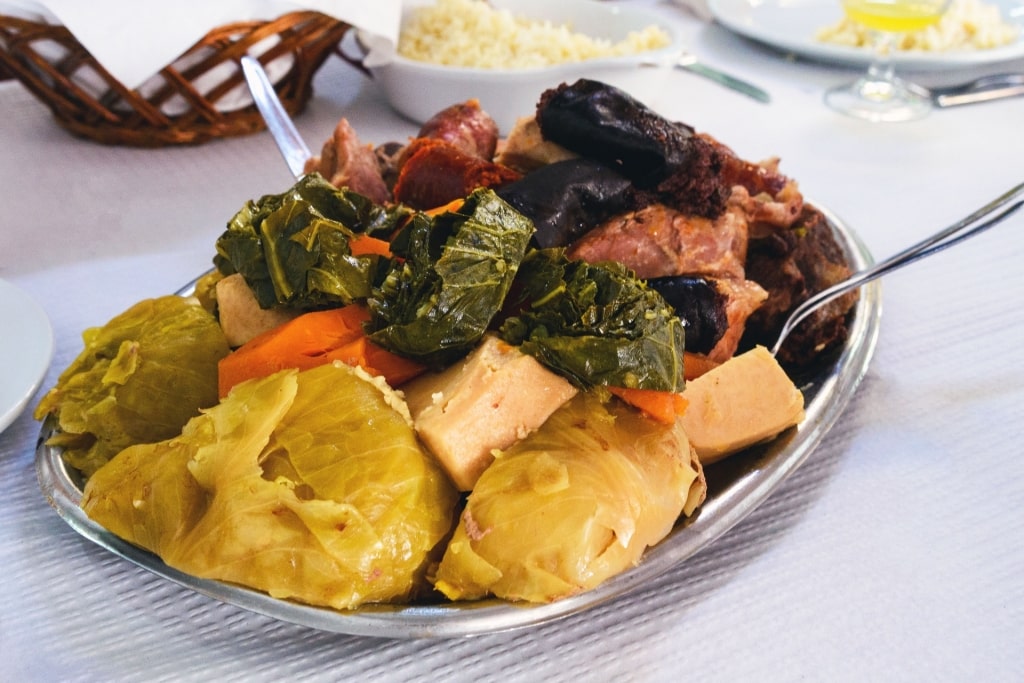
Cozido das Furnas
While Portuguese heritage has certainly shaped Ponta Delgada’s culture, São Miguel has also forged its own traditions—such as the culinary technique of using the earth’s geothermal powers to create Cozido das Furnas, a delicious stew cooked in the ground.
Wildlife & Nature
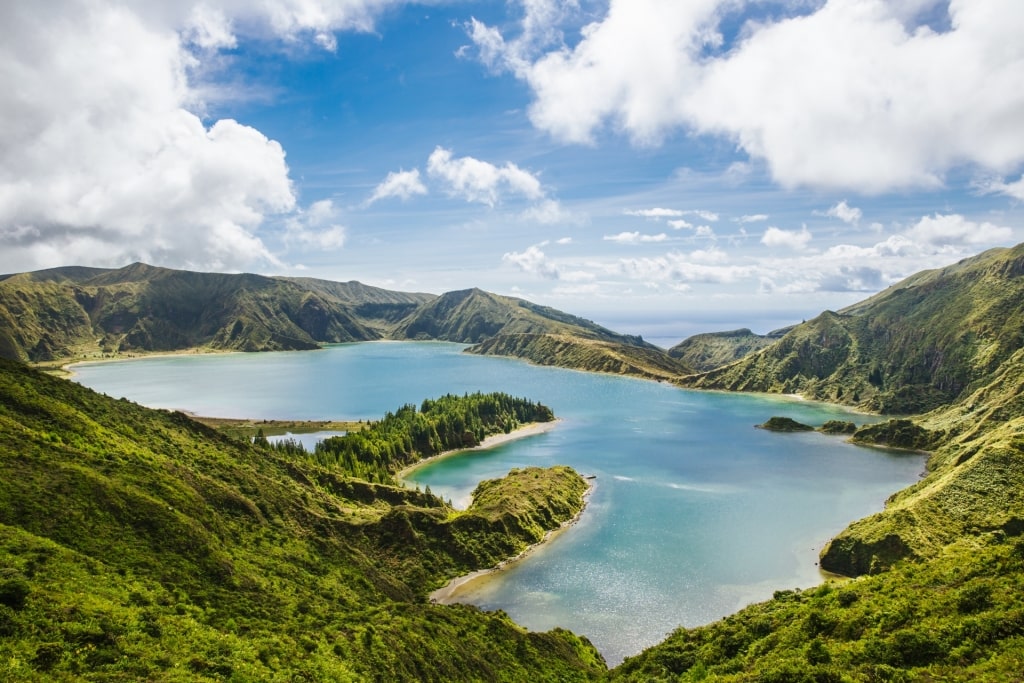
Lagoa do Fogo
São Miguel Island is only 40 miles from east to west, but it’s packed with heart-stopping natural wonders. Ponta Delgada’s picturesque whitewashed buildings and historic squares belie São Miguel’s dramatic, volcanic landscape.
Visitors can witness Lagoa do Fogo and Pico da Vara, the island’s two nature reserves, verdant rolling hills dotted with Azores heather, and dense cryptomeria (a type of conifer), pine, and laurel forests. The coastline is just as jaw-dropping, with alluring swathes of black-sand beaches.
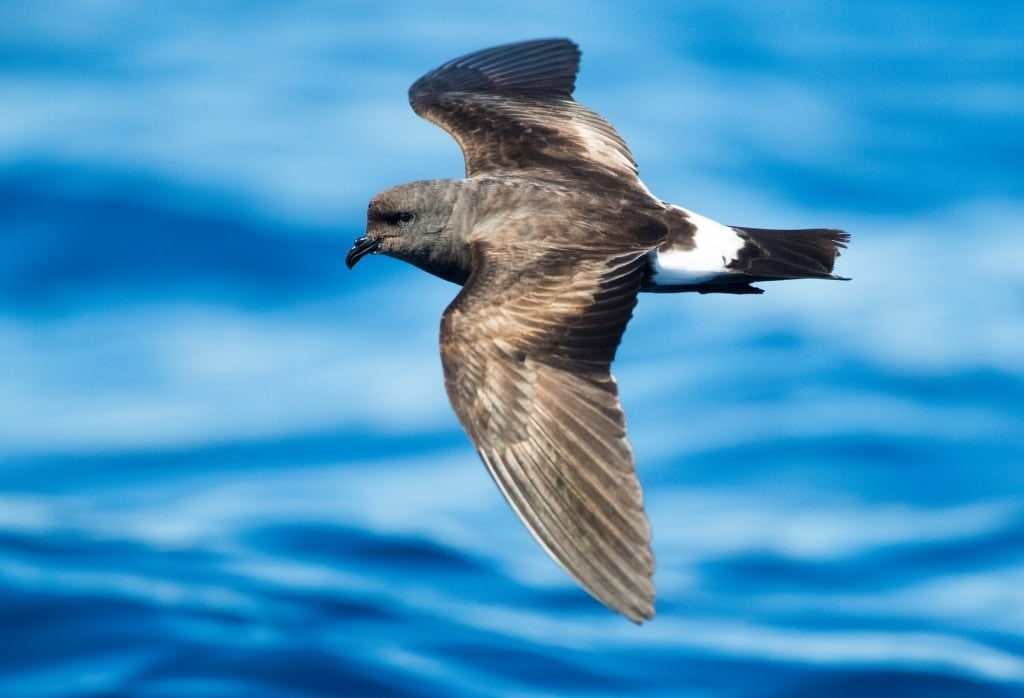
Monteiro’s storm petrel
São Miguel Island is recognized as a popular bird-watching destination, with nesting seabirds and some migratory species occasionally spotted in the Azores. São Miguel Island is most famous for the rare Azores bullfinch, endemic to a small area of the island, and Monteiro’s storm petrel, one of the rarest seabirds in Europe.
Some of the most extraordinary wildlife is found in the waters around Ponta Delgada, with the Azores offering an excellent opportunity to witness a variety of whales and dolphins in their natural habitat.
Tips for Visiting Ponta Delgada
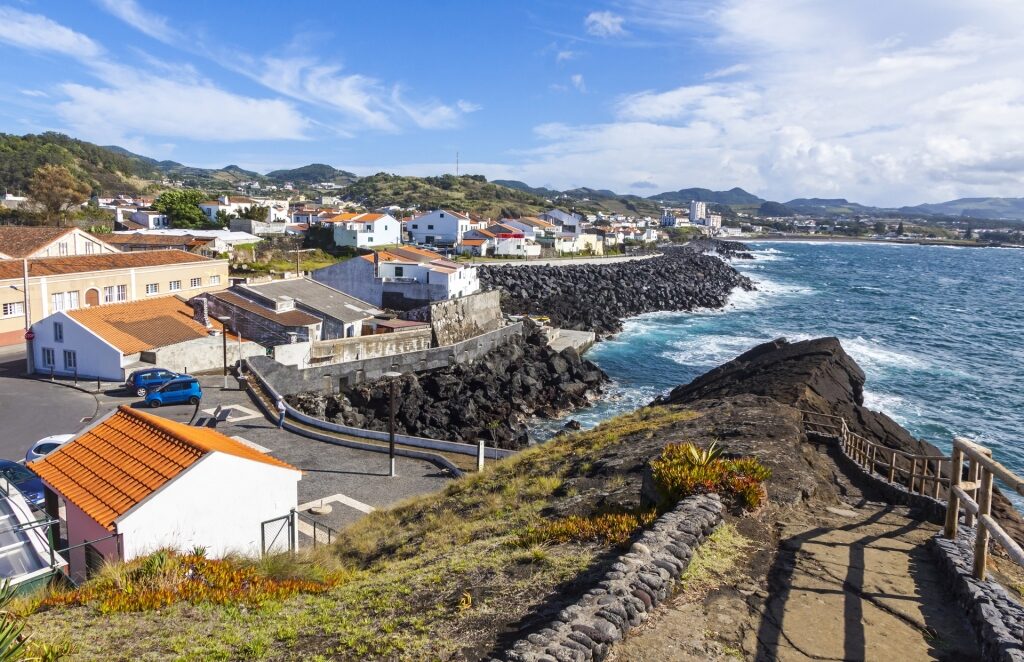
Ponta Delgada
Ponta Delgada is a compact city, which makes it ideal for exploring on foot in a short space of time. The city’s main attractions are within walking distance and are close to the waterfront, while the capital’s old town is largely pedestrianized, making it a pleasant experience to stroll around.
Ponta Delgada offers a reliable transport network with buses operating on the island’s south coast, which provides quick and easy access to some fantastic beaches.
Things to Do & Attractions
Marvel at Sete Cidades
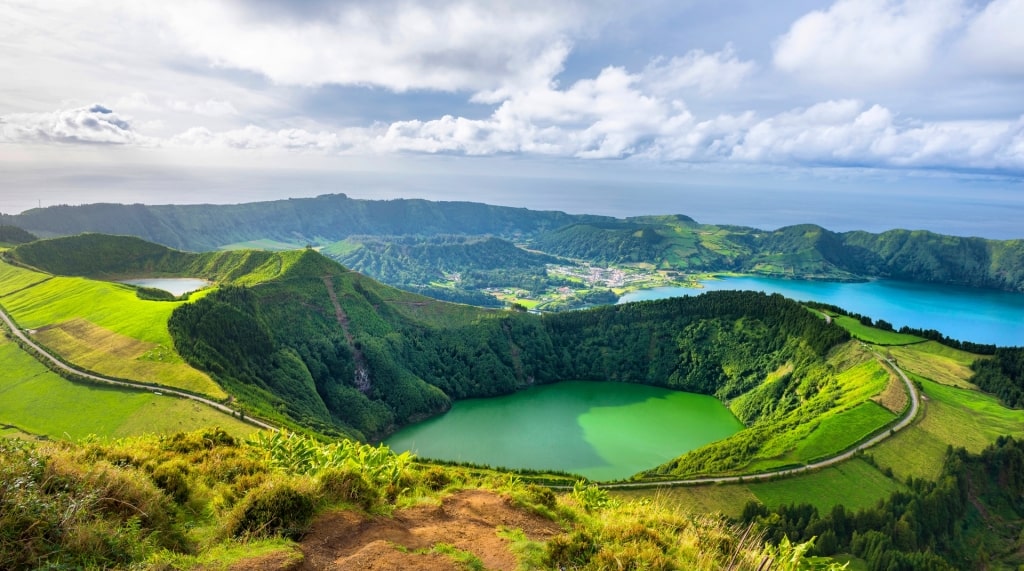
Sete Cidades
Roughly 20 miles northwest of Ponta Delgada lies one of São Miguel’s most magnificent natural attractions, Sete Cidades. A hulking volcanic crater, Sete Cidades cradles two lakes, Lago Azul (Blue Lake) and Lago Verde (Green Lake).
The drive to Sete Cidades snakes through some of the island’s luscious greenery. Depending on the timing of your visit, you may see some of the roads leading to Sete Cidades lined with pretty violet hydrangeas, which bloom during summertime.
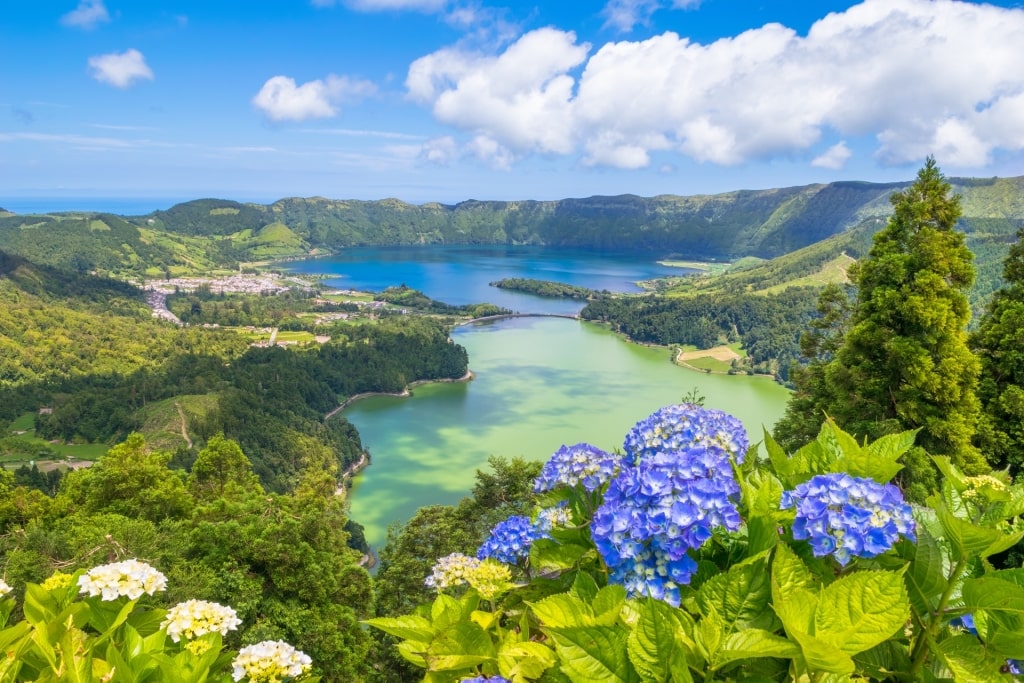
Vista do Rei, Sete Cidades
One of the best vantage points to view Sete Cidades is Vista do Rei to the south of Lago Verde. Once you’ve taken in the stunning views, follow the route to Lagos das Cidades parking lot to enjoy a lakeside walk.
There are a couple of cafés and restaurants in Sete Cidades village. You could also rent kayaks and stand-up paddleboards on which to explore one of the best lakes in Europe.
Join a Whale Watching Tour
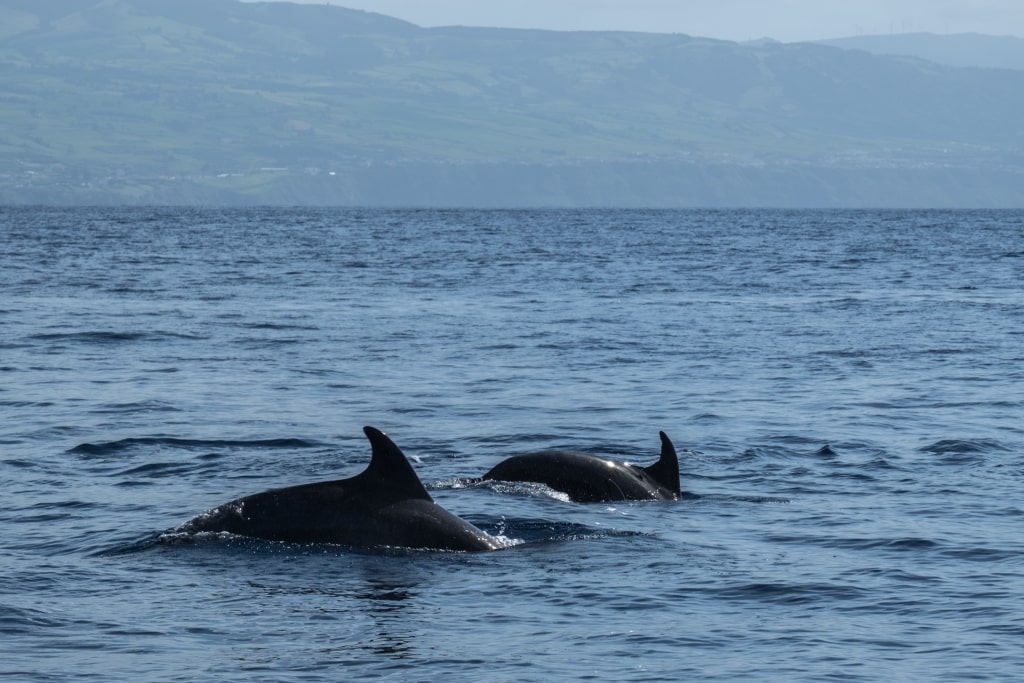
Whale-watching tour
Whale watching is popular year-round in the Azores, with the rich waters a haven for over 20 whale species, including sperm, humpback, blue, short-finned pilot, orca, fin, sei, and bearded whales.
While there is never any guarantee of spotting these majestic mammals, there’s a solid chance you will see them in the Azores. Embark on a tour from Ponta Delgada’s harbor to tick whale watching off your bucket list.
Join a boat tour led by an experienced marine biologist and naturalist guide who will teach you about the exciting marine life found in the Azores, including common dolphins, bottlenose dolphins, turtles, and manta rays.
Read: Best Places to See Orcas in the Wild
Witness Geothermal Activity in Furnas Valley
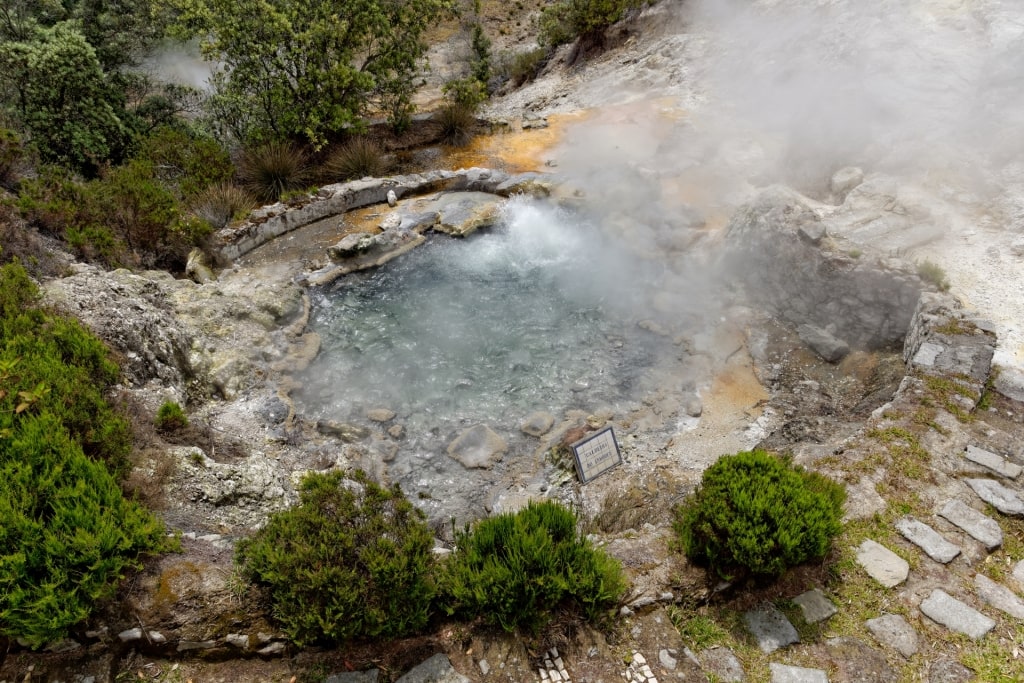
Furnas Valley
A 45-minutes drive east of Ponta Delgada will land you in the sulfur-scented Furnas Valley, known for its bubbling geothermal activity. Set in a dormant volcanic crater, Furnas Valley is one of the most unique places to visit in Europe, home to steaming fumaroles and a shimmering green lake.
Enjoy a rewarding hike around Furnas Lake to marvel at the hot steam billowing from the ground. For some of the most spectacular views of Furnas Valley, head to Pico do Ferro lookout point to the north of the lake.
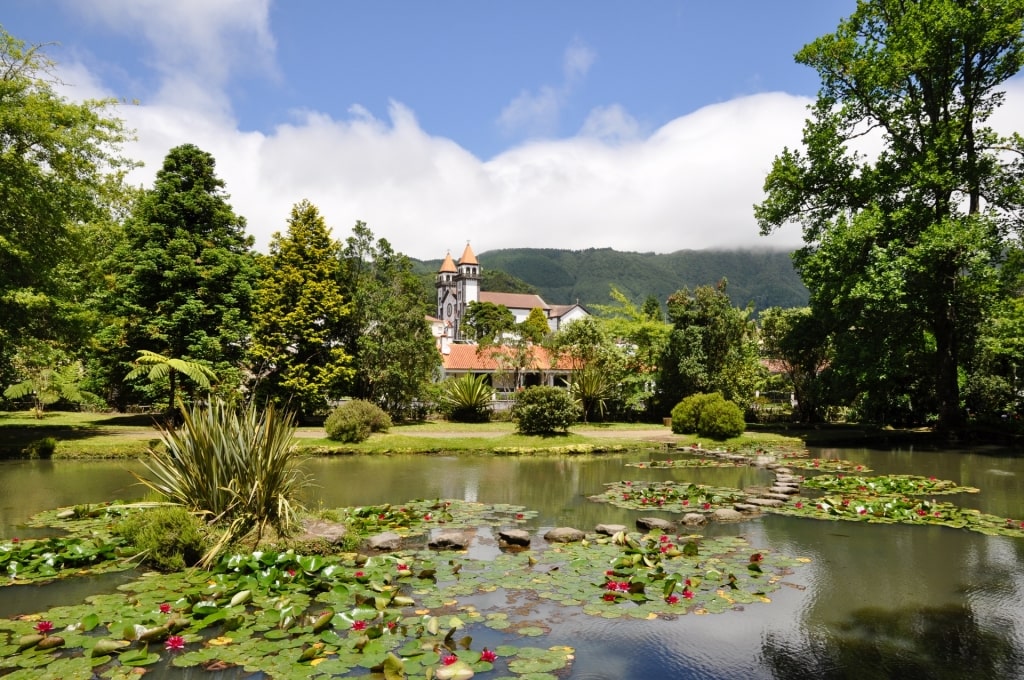
Terra Nostra Park
There are several spots where you can enjoy the benefits of Furnas’s mineral-rich thermal baths, including Terra Nostra Park. Pack a bathing suit and towel and once you’ve explored Terra Nostra’s tropical gardens, willowy ferns, and colorful camellias, step into the deeply relaxing thermal pool.
Stop by a local restaurant to try the local specialty, Cozido das Furnas. A handful of restaurants in Furnas proudly serve this hearty stew of vegetables, chicken, beef, pork, chorizo, and blood sausage that’s slow-cooked in the ground, heated by the steam from the geothermal springs.
Wander Ponta Delgada on Foot

Gonçalo Velho Cabral Square
Easy to navigate, Ponta Delgada is a delightful city to explore on foot and is home to some of the most beautiful places in Portugal. Starting near the waterfront, admire the Portas da Cidade, the three-arched, 18th-century city gates in Gonçalo Velho Cabral Square.

Igreja Matriz de São Sebastião
A few steps from Portas da Cidade, you’ll find the 16th-century Igreja Matriz de São Sebastião and its tall clock tower. Ponta Delgada’s main church, Igreja Matriz de São Sebastião is also a major landmark for its gorgeous Manueline and Baroque porticoes and gilded carvings.
Take in more culture at the Carlos Machado Museum, where you can view three permanent exhibitions—Natural History, Memory of the Convent, and Sacred Art—that explore the island’s heritage.
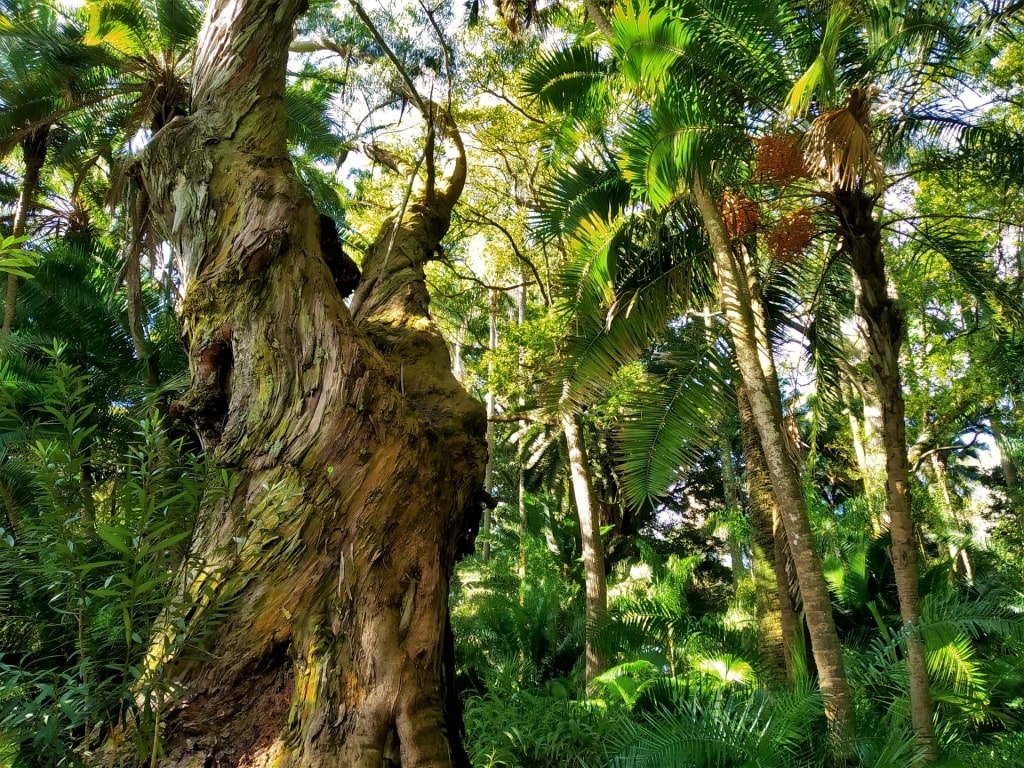
Jose do Canto Botanical Garden
Soak up the serenity of Jose do Canto Botanical Garden, a private garden that’s open to the public, and features hundreds of plant species from around the world, as well as the 16th-century Chapel of Sant’ana.

Nossa Senhora da Esperança
Another 16th-century religious landmark is the Convent and Chapel of Nossa Senhora da Esperança, close to the Fort of São Brás, near the waterfront. Admire the
Baroque-style altar and beautiful tiles inside the convent and chapel before settling down in a shaded spot to enjoy a glass of the island’s delicious wine.
Gaze at Lagoa do Fogo
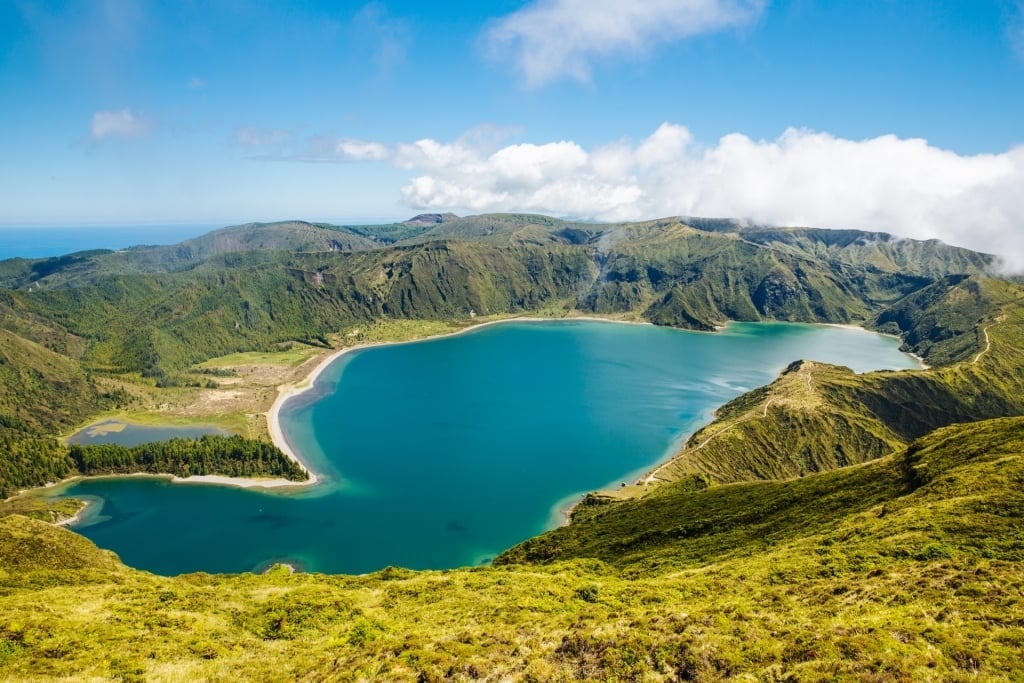
Lagoa do Fogo
Lying in the center of São Miguel, a short drive from Ponta Delgada, Lagoa do Fogo is a glassy lagoon located within a caldera. Pico da Barrosa Mountain’s viewpoint is one of the best places to take in Lagoa do Fogo’s iridescent blue waters.
Gaze out across Pico da Barrosa’s emerald-green treetops to see as far as the ocean. Swimming in the lake isn’t permitted, but the hikes around it are among the most rewarding on the island and the views alone are worth the trip to Lagoa do Fogo.
Explore Volcanic Beaches
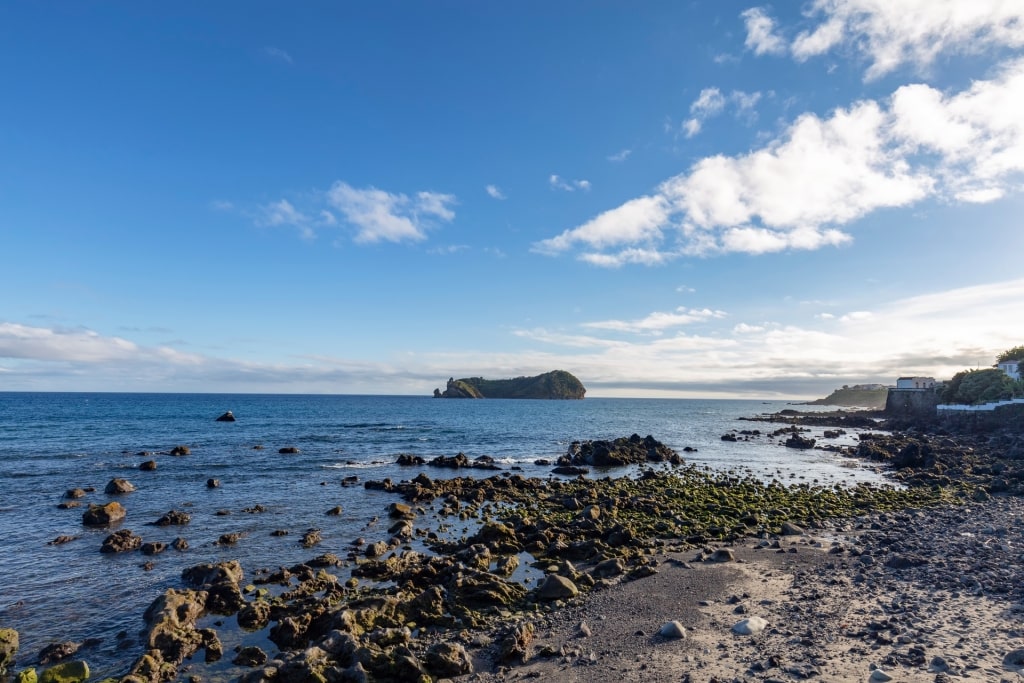
Ribeira das Tainhas
The black, velvety-soft beach of Ribeira das Tainhas, nestled in a small cover, is roughly a 25-minute drive east of Ponta Delgada. You can also take a bus from Avenida Infante Dom Henrique, on Ponta Delgada’s waterfront, which takes around 90 minutes.
Steps lead to the shoreline from the whitewashed town of Ribeira das Tainhas, where bathroom facilities, a lookout point, and a café are located.
A rocky outcrop just off the shore is used as a platform for jumping off into the lapis lazuli blue ocean—there is even a ladder allowing swimmers to climb up onto the rocks.
Visit a Pineapple Plantation
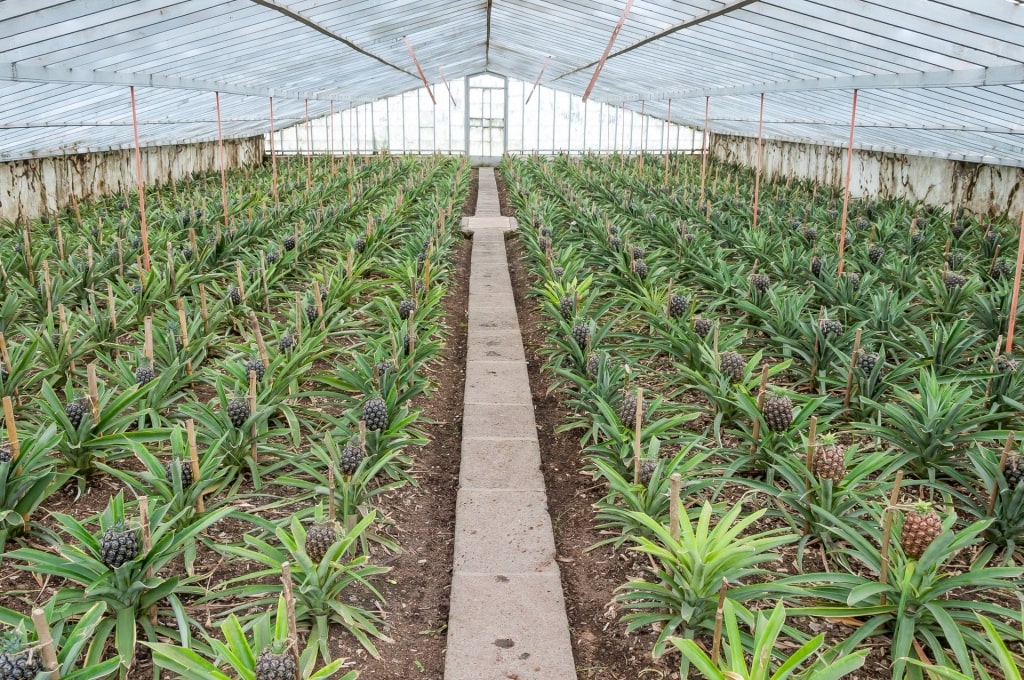
Augusto Arruda Pineapple Plantation
Visit the Augusto Arruda Pineapple Plantation in Fajã de Baixo for a fascinating insight into pineapple cultivation in Ponta Delgada. Tour the plantation and explore the traditional greenhouses where pineapples have been grown for over 150 years.
The plantation offers a complimentary tasting of its pineapple jam and pineapple liqueur. You can buy these to take home as a souvenir, along with pineapple chutney, pineapple with mustard, and pineapple with olive oil.
Food & Drink

Mercado da Graça
From fragrant fish stew to a succulent steak, and juicy pineapple, the Azores’ vibrant produce is reflected on menus in Ponta Delgada, making the capital’s dining scene a joy to explore.
The Azores offer an array of fruit and vegetables, fresh fish, meats from animals that graze off the islands’ green pastures, plus the wares of producers creating sensational cheese, wine, honey, and jam.
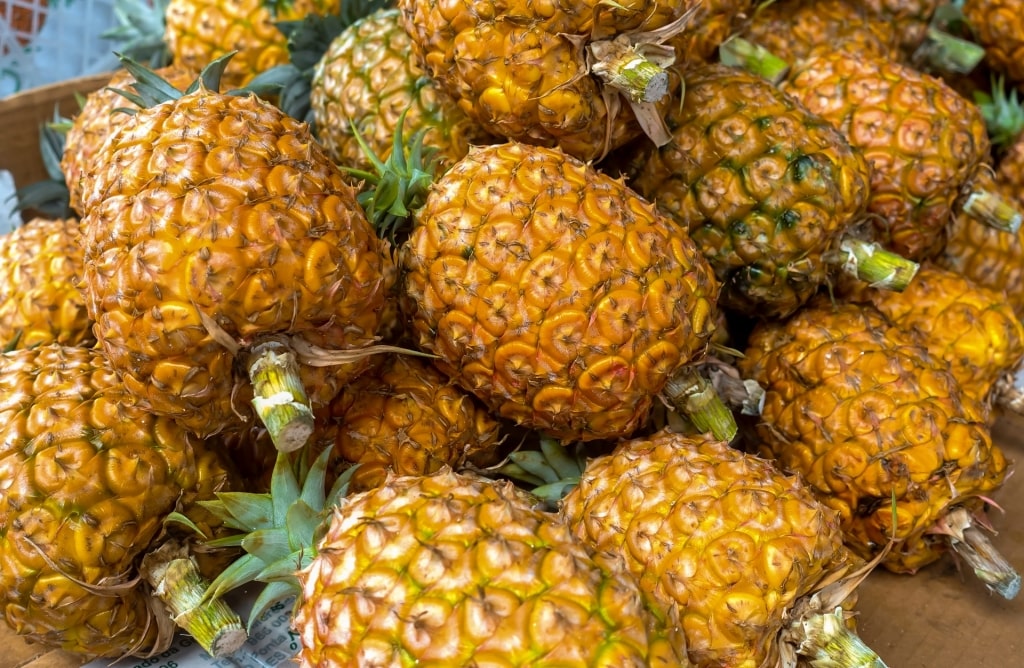
Azorean pineapples
To see the ultra-fresh island produce first hand, visit Ponta Delgada’s buzzing food market, Mercado da Graça, on Rua do Mercado. Among the bunches of mustard-yellow sunflowers and pastel hydrangeas, you’ll find watermelons, bananas, and passion fruit, among the cheeses, chutneys, and meats on offer.
Sweet and juicy Azorean pineapple is particularly delicious, with just the right amount of zesty sourness to keep you going back for more. Look out for vendors offering samples.
You could also dedicate time to grazing over some of Ponta Delgada’s alluring lunch menus. The greatest influence on the region’s restaurants is the North Atlantic, which means you’ll find fresh seafood of all varieties—clams, octopus, shrimps, cod, sardines, and tuna—broiled, fried, braised, and baked.
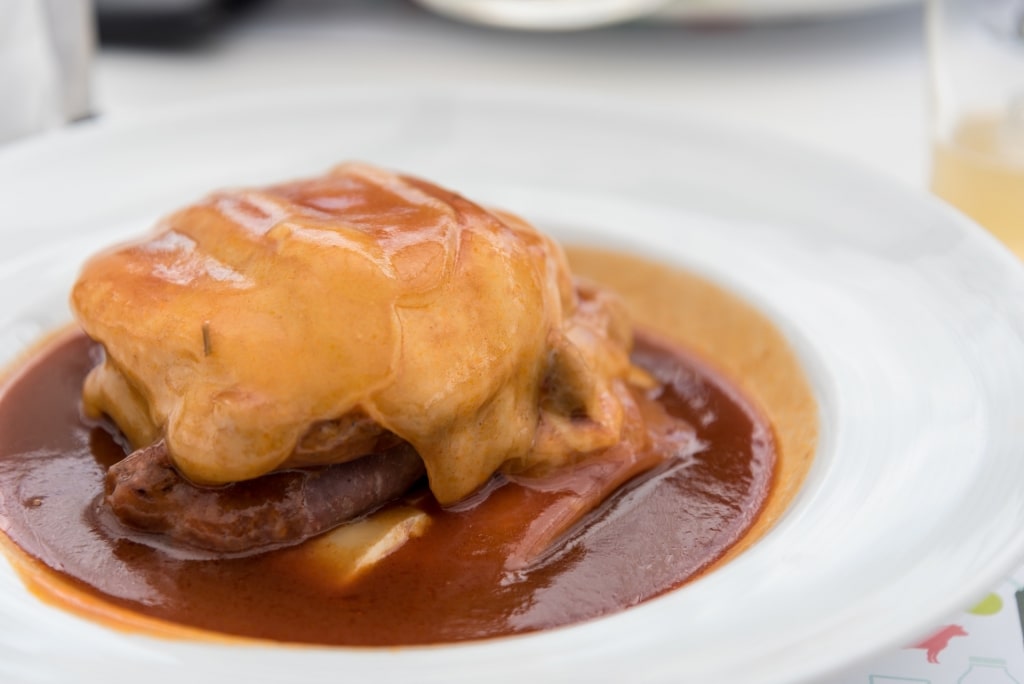
Beef
One of the most popular dishes in Ponta Delgada is fried mackerel, traditionally eaten whole, which pairs wonderfully with local white wine.
Beef dishes and cow’s cheese are popular, too, due to the abundance of free-grazing cows in the Azores. Other specialties include a rich Portuguese blood sausage and sesame-crusted tuna.
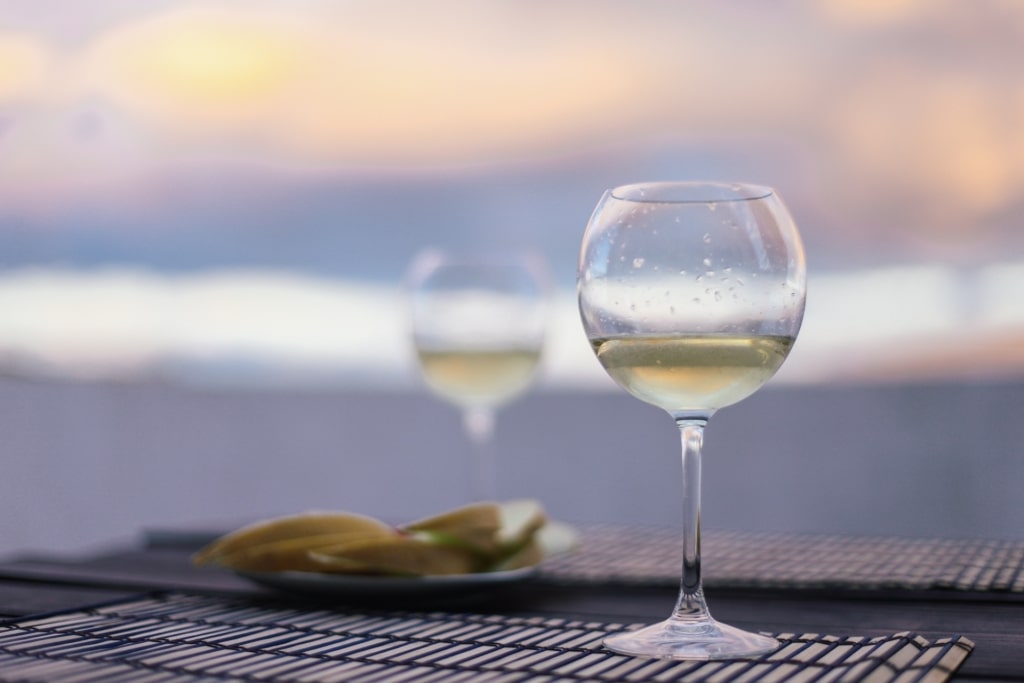
Wine
Wine aficionados should look out for wines produced by the Azores Wine Company in Pico, including the fresh and delicious Arinto dos Açores and Terrantez do Pico.
A Tasca, tucked away on Rua do Aljube near Igreja Matriz de São Sebastião, is one of Ponta Delgada’s most popular restaurants serving authentic Azores food. Since reservations aren’t accepted, arrive early to avoid waiting.
Best Time to Visit Ponta Delgada
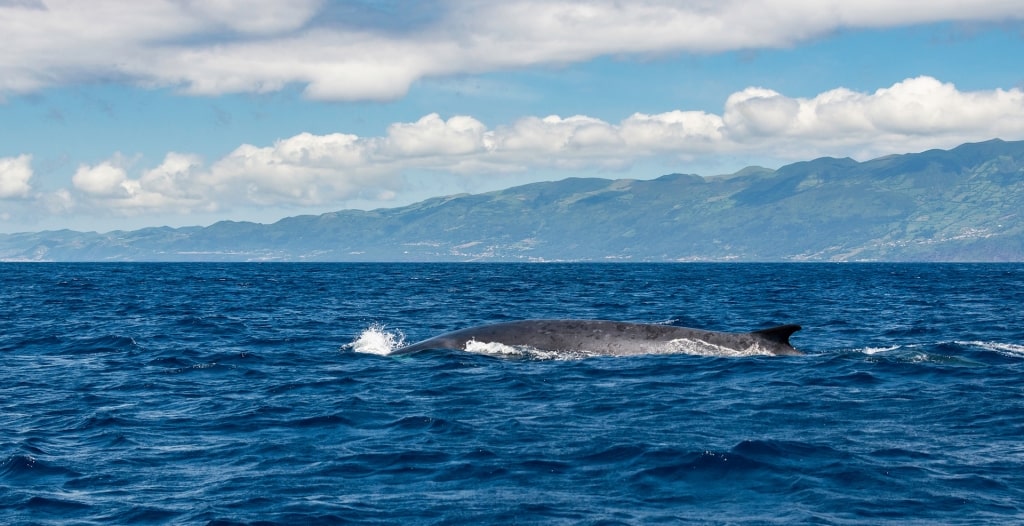
Blue whale
Ponta Delgada benefits from a mild climate, year-round. The best time to visit the Azores is from April through October. Consider visiting early or late in the season if your plans include active adventures when you will benefit from cool and breezy days that are perfect for hiking.
You’ll also have a much greater chance of spotting certain species of whales around April, including the majestic blue whale, the largest animal on the planet.
When it comes to packing for the Azores, the best tip is to layer up so you can add or take off a layer as the weather cools down and heats up. Pack waterproofs, too. Being in the North Atlantic means rain showers are to be expected.
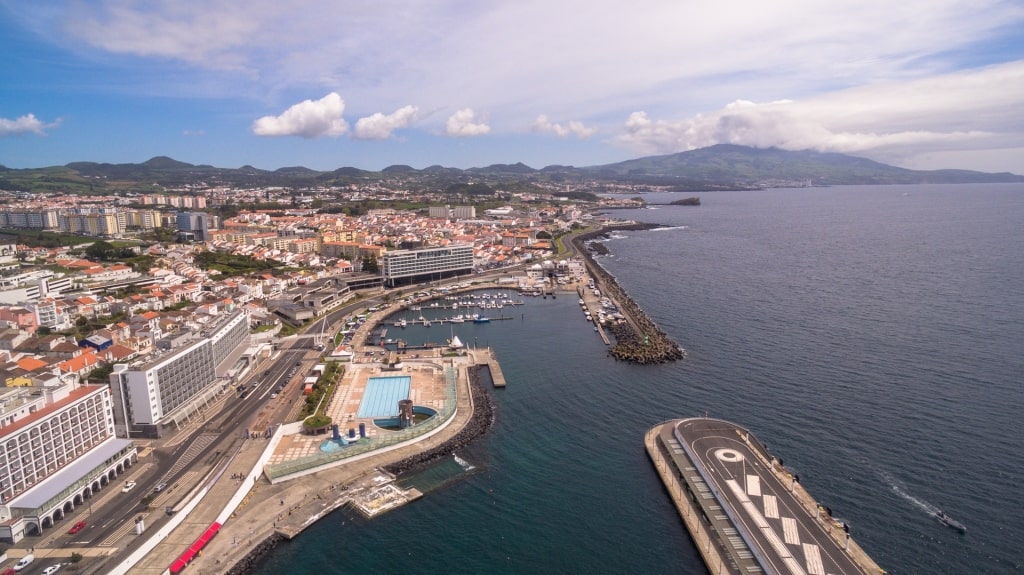
Ponta Delgada
Discover Celebrity’s cruises to Ponta Delgada and discover the delightful capital of the Azores.
